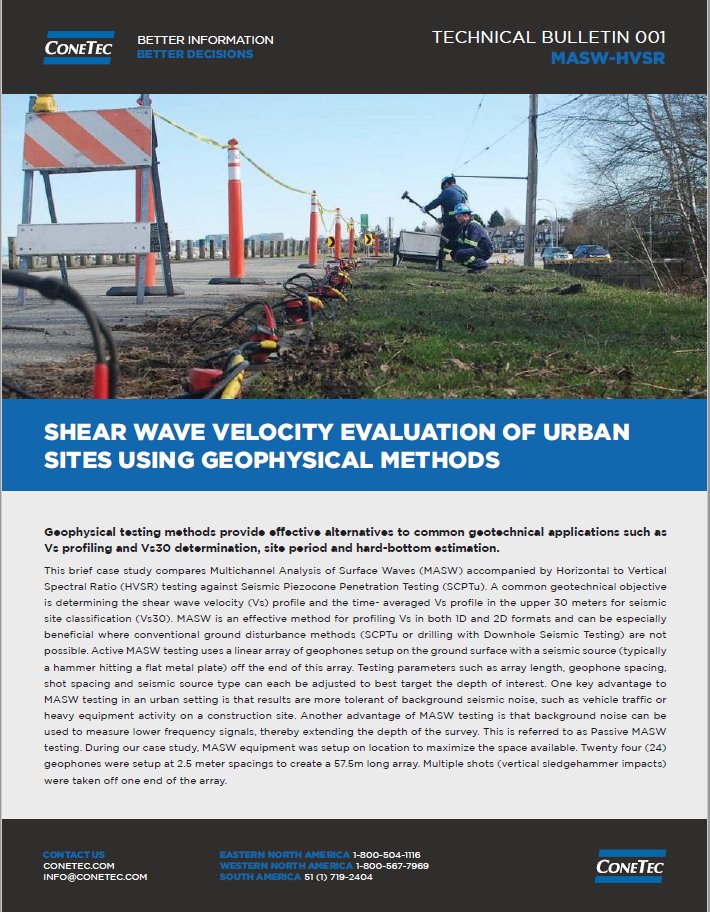Shear Wave Velocity Evaluation of Urban Sites Using Geophysical Methods
This brief case study compares Multichannel Analysis of Surface Waves (MASW) accompanied by Horizontal to Vertical Spectral Ratio (HVSR) testing against Seismic Piezocone Penetration Testing (SCPTu). A common geotechnical objective is determining the shear wave velocity (Vs) profile and the time- averaged Vs profile in the upper 30 meters for seismic site classification (Vs30). MASW is an effective method for profiling Vs in both 1D and 2D formats and can be especially beneficial where conventional ground disturbance methods (SCPTu or drilling with Downhole Seismic Testing) are not possible. Active MASW testing uses a linear array of geophones setup on the ground surface with a seismic source (typically a hammer hitting a flat metal plate) off the end of this array. Testing parameters such as array length, geophone spacing, shot spacing and seismic source type can each be adjusted to best target the depth of interest. One key advantage to MASW testing in an urban setting is that results are more tolerant of background seismic noise, such as vehicle traffic or heavy equipment activity on a construction site. Another advantage of MASW testing is that background noise can be used to measure lower frequency signals, thereby extending the depth of the survey. This is referred to as Passive MASW testing. During our case study, MASW equipment was setup on location to maximize the space available. Twenty four (24) geophones were setup at 2.5 meter spacings to create a 57.5m long array. Multiple shots (vertical sledgehammer impacts) were taken off one end of the array.










QUICK LINKS